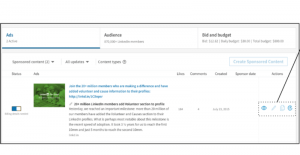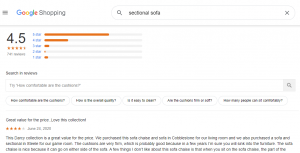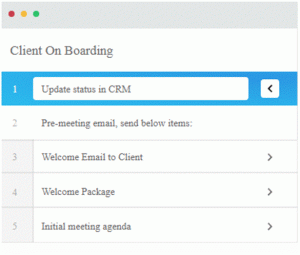
There are two things you can be sure of in today’s mobile world: Social media is booming, and most people use more than one device to browse the web.
These new multi-device browsing habits are making it more difficult for advertisers to track consumers’ actions and retarget them across different platforms. In fact, 67% of consumers begin the shopping process on one device and move to another before purchasing.
As of right now, there’s still no leader in cross-device tracking. This means there’s no sure way to always know if a website visit or purchase is from a new or returning customer.
But, even though there’s no single solution to this cross-device dilemma, social media is one of the best ways to target users across their devices.
The Cookies Are Crumbling
Before, desktop and mobile web browsers used cookies to track a user’s journey across the internet. Now, the cookies’ usefulness is degrading. People are not only using multiple devices, but also different channels. They’re shopping on mobile apps as well as web browsers.
Deterministic vs. Probabilistic
Currently, there are two methods for tracking users across devices: deterministic and probabilistic.
Deterministic retargeting is possible when publishers and platforms ask users to sign into apps or websites on every device they use, giving each user a unique ID across these devices. This makes it possible for a website or platform to establish you as the device’s owner.
Probabilistic retargeting is a method carried out by ad companies. It uses probability to determine which specific user is most likely using which device. Although you’re not as likely to be spot on, the actual user is still most likely similar to the predicted one.
A lot of advertisers prefer deterministic retargeting since it’s more accurate. But you can’t always use it like probabilistic. That’s where social media comes in — its retargeting methods are deterministic.
Social Media Is Mostly Mobile
Though most people log into social media over various devices, a majority of social media usage is on mobile.

Source: Statista
Starting your advertising on social media makes it easier to track consumers who use it to start the buyer’s journey. You can then retarget the right people on social media by adding the Facebook Pixel or the Twitter Tag to the code in your website so it recognizes returning users.
There is one main downside to tracking customers through social media (or any other deterministic method). There’s no way to identify a returning customer with a pixel or tag if they aren’t logged into their account. Social media is a closed platform, or “walled garden.”
Despite this downside, the benefits of being able to advertise to and retarget your customers on social media outweigh the negatives, and social media sites are working toward expanding their retargeting capabilities outside of the closed platform.
The Benefits of Social Media Advertising
Last year, Americans spent an average of 4.7 hours a day using the internet on their phone, and the largest percentage of that time was spent on social media and other apps.
Pinterest, Twitter, Facebook, and Instagram have all upped their advertising game within the last year, adding more creative and interactive ads with stronger CTA’s. A lot of people are growing tired of ads and implementing ad blockers, but social media ads are usually more integrated into the site, and therefore more enjoyable. For example, most Instagram ads looks like any other photo posted, and a lot of Twitter ads stick with the short, humorous nature seen in tweets.

Social media sites also collect huge amounts of data on their users, such as age, demographic, gender, interests, careers, etc. This information is then used to target audiences they believe are interested in your product or service. Selecting this option means you can reach your consumers before they even search for you.
You can also prompt users to log in with their social media account on your website or app instead of creating a new profile.

This option is not only more convenient for consumers (I mean, who wants to remember all those passwords?), but it also means that the websites and apps can connect to the data collected through social media, which is then used for retargeting.
Still Not Convinced?
Here are some other reasons to embrace social media advertising:
Word of Mouth Marketing
Social media is, well, social. I know that sounds obvious, but it means that word of mouth marketing is one of social media’s strongest attributes.
People talk about what they like and share their good experiences with their friends and family. Advertising on social media, or engaging in great customer service, just makes the segway into your customers talking about you that much easier.
Less Need to Leave the Apps
Social media is also more than just social. Some even argue that it’s changing the face of SEO, because social search is growing. In fact, Facebook handles about 1.5 billion searches a day, and more of these searches are targeting content.
A lot of people are now turning to social media for updates on news and current events, and thanks to features like Facebook’s instant articles, users don’t even have to leave the app to view other sites.
Revenue Is Growing
Facebook announced in their last earnings report that 80% of their ad revenue came from mobile. By 2017, it’s projected that social media advertising will generate $ 11 billion in revenue. That’s a huge increase from the $ 6.1 billion in revenue seen in 2013.
Social media advertising is a market that’s continuing to grow with promises of higher click-through rates and smaller expenses. While multi-device targeting still has a long way to go, social media is one of the best ways to get started now.
Digital & Social Articles on Business 2 Community(37)
Report Post









